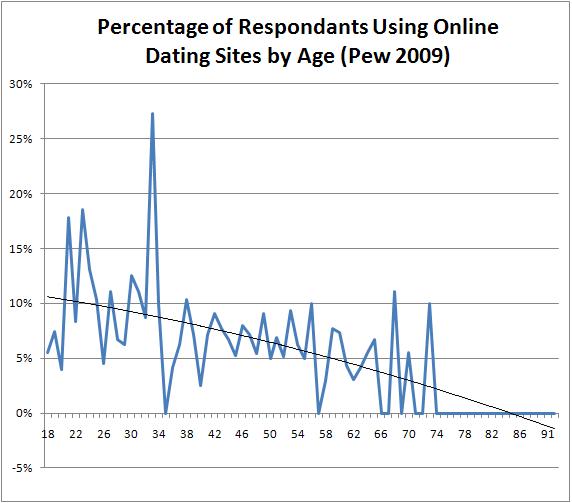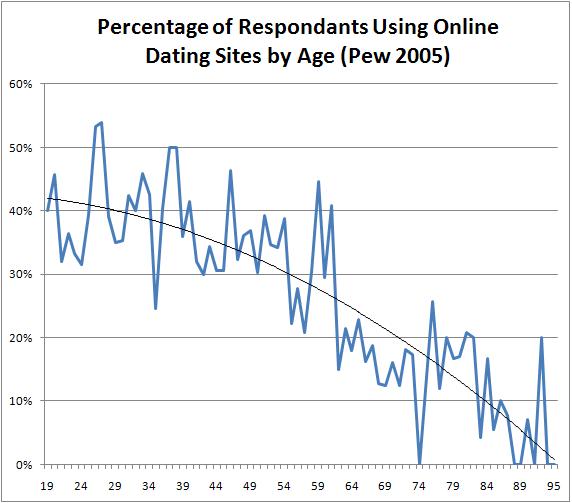Because I am usually trapped in the Sociology Department’s data dungeon on Wednesdays, I have decided to establish a recurring series of posts that discuss new trends or data.
Last week, I compiled some data from a 2005 Pew study to explore whether college students are using Online dating. I’ve now replicated that chart for Pew’s 2009 data. What’s most striking about these data is their sizable departure from the 2005 data. Particularly, because the movement is opposite of the expected direction (i.e., upward). Recall that, in the 2005 chart (included below), roughly 40% of young adults reported using online dating websites, compared to roughly 10% of that same group in 2005.
What’s most striking about these data is their sizable departure from the 2005 data. Particularly, because the movement is opposite of the expected direction (i.e., upward). Recall that, in the 2005 chart (included below), roughly 40% of young adults reported using online dating websites, compared to roughly 10% of that same group in 2005. I suspect that a change in wording is the primary culprit. The 2005 survey asked:
I suspect that a change in wording is the primary culprit. The 2005 survey asked:
Have you ever gone to an online dating website or other site where you can meet people online?
The 2009 survey asked:
Please tell me if you ever use the internet to do any of the following things. Do you ever use the internet to… Use an online dating site. Did you happen to do this yesterday, or not?
Note that the 2005 question is double-barreled and is so broadly constructed that it seem to clump dating-specific sites like eHarmony, Match.com, and OkCupid into the same category as general social-networking sites like Facebook and MySpace. Thus, the 2009 question is probably a better measure our object of inquiry (namely, use of online dating sites).
The trend line for the 2009 data resembles the 2005 data but is much less steep, indicating that the influence of age has a subtle negative relation with online dating. Yet, when we look more closely, we see that the graph is fairly dichotomous with respondents under 35 using online dating much more frequently than respondents 35 and over. Of course, there are less single people in older cohorts, and we cannot make good inferences from these graphs about whether single users under 35 are using online dating more than single users 35 and older.
